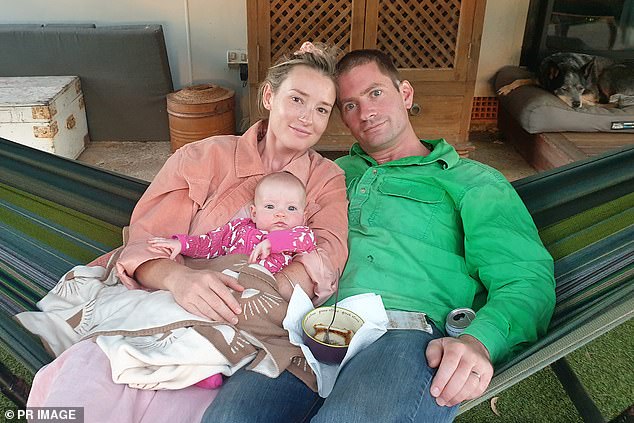As soon as Lilly Castor found out she was pregnant, she imagined a future filled with family adventures and schoolyard tales.
When her son Vincent was stillborn in November 2022, those lost dreams compounded her grief.
“Perinatal loss creates a sense of isolation because there is no lifetime of memories to celebrate with family, friends and community,” said Castor, who is a midwife in rural New South Wales.
‘You are often grieving the loss of a baby that many people never got to know.
“You feel like no one knows or that it’s hidden.”
A new online program called Living with Loss aims to help grieving parents navigate their grief no matter where they live in Australia.
The self-guided digital tool has six modules to help families understand their emotions, develop coping strategies and deal with difficult conversations after the loss of a baby.
The program, developed by the Stillbirth Research Centre of Excellence based at Mater Research and the University of Queensland, also addresses common barriers to bereavement care.
Lilly Castor received support from an online program after her first baby, Vincent, was stillborn in 2022
Researcher Siobhan Loughnan said families in regional Australia can face many barriers to seeking support, including limited services, long-distance travel and long waiting lists.
“There is also often talk of stigma and a feeling that their grief is meaningless or invalid because their baby died during pregnancy,” Dr Loughnan told AAP.
“That’s where we thought about a digital program that could be available at any time of day or at any point in a parent’s grieving process.”
The emergence of additional services following perinatal loss follows the New South Wales Birth Trauma Inquiry, which involved thousands of parents and experts.
The inquiry’s final report recommended expanding mental health support for families who have experienced birth trauma, including miscarriages and stillbirths.
“We are making progress in bringing stillbirth and miscarriage out of the shadows and not just an individual experience that no one talks about,” Dr Loughnan said.
“There is a lot more advocacy around the real impact of loss and how it has lasting, lasting effects on parents and communities.”
Ms Castor, who welcomed daughter Trixie with husband Tim 10 months ago, found solace in the Living With Loss programme and through friendships with other grieving parents.
The 32-year-old is passionate about improving care in regional areas and speaking out about stillbirth, which affects more than 2,000 Australian families each year.
“It’s about gradually changing the culture and allowing and providing families with the confidence to be able to talk about their children,” she said.
‘I feel as present and connected to Vincent as the day he was born and I held him in my arms.
“Although he is still a baby to me, he is two years old and travels with our family.”


